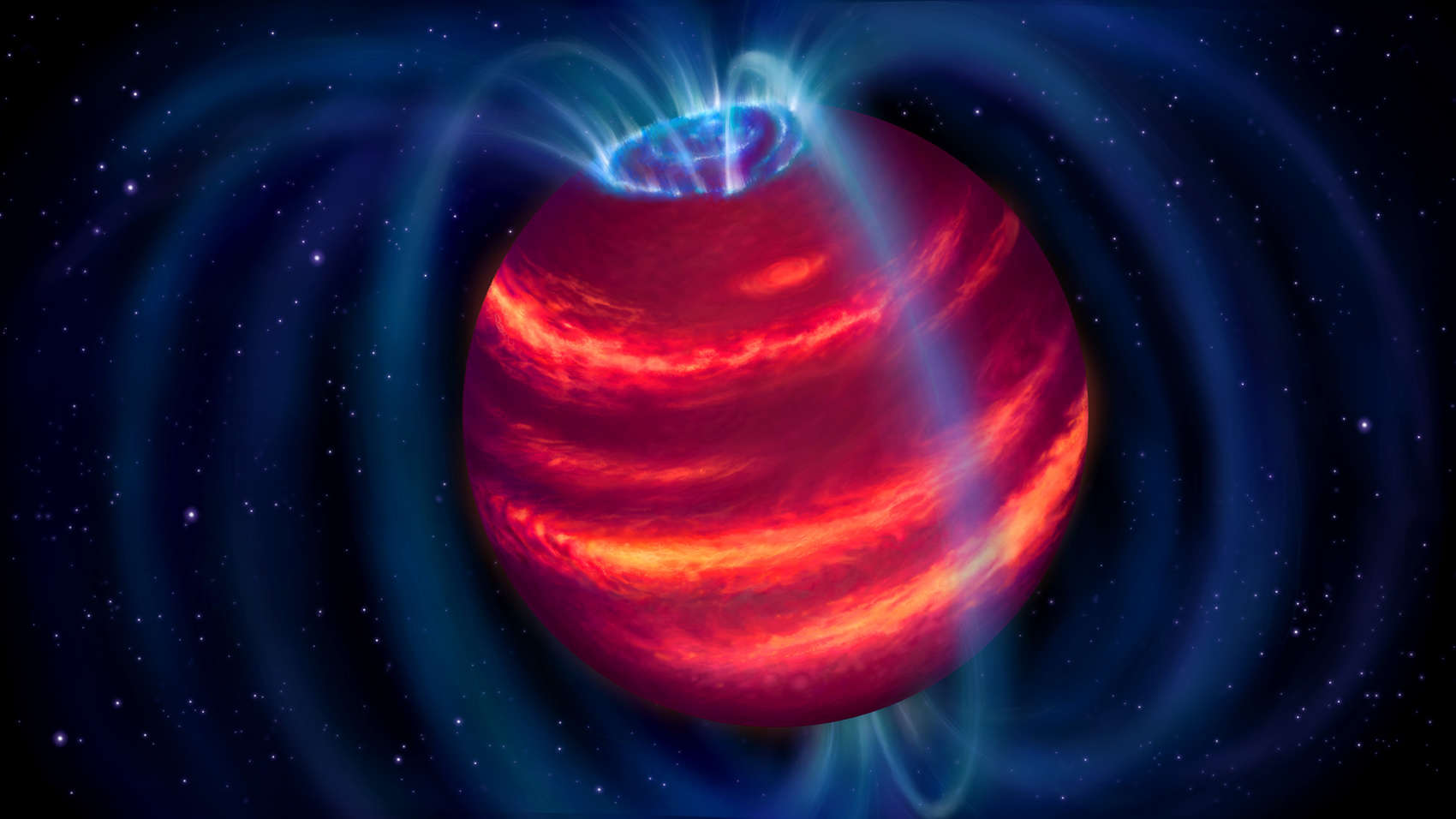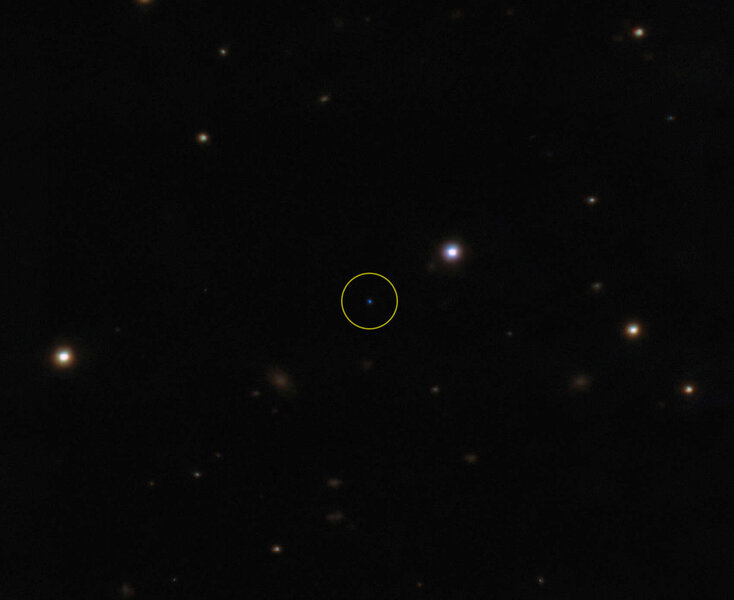A blast of radiation reveals a nearby cold brown dwarf

For the first time, a nearby brown dwarf has been discovered via its emission in radio waves, instead of the usual infrared light they emit. Also, instead of just steadily glowing in radio frequencies, it appears to have blasted all that radiation in one big flash that made it stand out in the radio telescope images.
The object is called BDR J1750+3809, and is likely about 200 light years away, which is pretty close on a galactic scale. That certainly helped in the discovery, since closer objects appear brighter.
Brown dwarfs are objects more massive than planets, but not massive enough to initiate hydrogen fusion in their cores as true stars do. They form hot, but cool off over time since they don't create their own internal energy. For billions of years they glow in the infrared, which makes them somewhat easier to spot using telescopes sensitive to that wavelength of light.
Many are seen in radio wavelengths, too, but that usually happens after they're discovered using infrared telescopes. BDR J1750+3809 is the first to be found first using a radio telescope.
The scientists who made the observations realized that brown dwarfs might be bright in what's called polarized radio light. This is when the light waves are all (or mostly) aligned in the way they oscillate, as opposed to just oscillating every which way. This can happen when light bounces off something like metal or dust grains, or if they're generated by magnetic fields, and if you use filters you can pick that light out from unaligned light (polarized sunglasses do the opposite; they block those waves, so sunlight reflected off glass or metal gets toned down).
Using LOFAR, the LOw Frequency ARray (which observes the sky in very long radio wavelengths) they scanned the sky looking for bright sources in polarized radio light. They found a lot, but then compared them to known sources like stars, galaxies, and so on to eliminate anything not brown-dwarfish. BDR J1750+3809 stood out as a bright object that had no known counterpart in visible light observations.
They looked then for sources in infrared light, where brown dwarfs shine, and while nothing was seen in most, they did find a faint source in a survey done by UKIRT (the United Kingdom Infrared Telescope). Heartened, they used the Palomar 200-inch telescope, but didn't find anything. Still, they tried again, this time with the massive Gemini-North 8.1-meter telescope, and hit paydirt: They found the infrared glow from the brown dwarf, confirming their discovery. They also found it in WISE (Wide-field Infrared Survey Explorer) images, which helped them ID it as a brown dwarf.
Spectra of the object also showed the presence of water vapor and methane in its atmosphere, which means that not only is it a brown dwarf, it's a cold one, since methane molecules break down at temperatures above 1000°C.
Why does it glow in radio light? There are two ways this can happen, both involving magnetism. Brown dwarfs, like planets and stars, can have strong magnetic fields, which capture charged subatomic particles like electrons. Sometimes these spin around the magnetic field lines, creating a glow. However, this glow is pretty weak, and generally doesn't create polarized light, so it's unlikely to be the cause.
The other way is more complicated, but in very general terms the magnetic field lines build up energy over time, which then gets released in one big flash once it becomes unstable (this has the awesome name of cyclotron maser instability). This fits much better with the observations, and is what the astronomers assume is the cause.
The next step is to take deeper observations over a longer period of time to look for any cyclic variations in the radio emission. This could indicate rotation of the brown dwarf, or if it's orbiting another object (or if a planet is orbiting it). Knowing that will help astronomers understand how the radio emission is generated. For example, it may be the light is emitted in all directions, or it might be beamed, focused like a lighthouse beam.
Sometimes orbital motion can help focus the light in one direction, so knowing if it has a companion object could be enlightening.
Also, as particles move around in the magnetic field, they can be focused downward, too, toward the brown dwarfs poles. When they slam into the atmosphere there the gas responds by glowing: an aurora! This has been seen before in an object that may be a brown dwarf (or an oversized rogue planet). If that's happening with BDR J1750+3809, it's possible that glow can be detected with big telescopes that see in optical light (the kind our eyes see). If so, then it may be possible to determine its distance more accurately using parallax, the apparent motion we see it making that's actually a reflection of the Earth orbiting the Sun.
One other interesting possibility: The magnetic field strength of BDR J1750+3809 is comparable to those of giant exoplanets orbiting other stars. That means they may be detectable this way as well: A brand new method to measure properties of planets dozens or even hundreds of light years away!
All in all a pretty nifty discovery, and one that opens a new window on the sky for brown dwarfs and exoplanets. Brown dwarfs are likely to be extremely common in the galaxy, so having a new way to observe these incredibly faint objects is welcome.






























